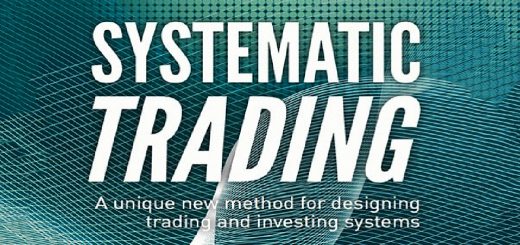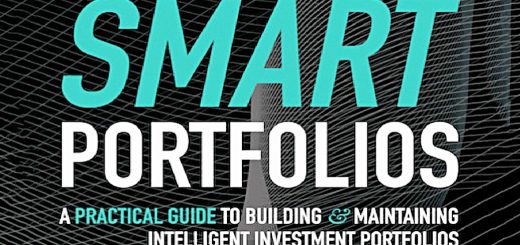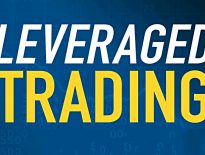Leveraged Trading 3 – The Starter System

Today’s post is our third visit to a new book by Rob Carver, one of our favourite financial authors. The book is called Leveraged Trading.
Contents
Expected returns
Rob works out the expected return from the RSS by rearranging the formula for the Sharpe Ratio:
SR = (r – b) / s
to become:
r = (SR * s) / b
With an SR of 0.24, s of 12% (our risk target) and b at 2% (in 2019), we have:
r = (0.24 * 0.12) / 0.02 = 4.9%
The SR has been provided by Rob from his backtesting, but this formula does at least show how returns would vary with different target risk levels.
In fact, things are worse than this, since Rob’s “speed limit” for costs would reduce the SR by 0.08 (8%):
r = (0.16 * 0.12) / 0.02 = 3.9%
Rob promises to improve these returns with tweaks to the system in later chapters.
Position sizing
In the previous article, we calculated notional exposures.
- The next section of the book looks at translating these into position sizes.
This is simply a matter of working out the exposure – measure in your home currency – provided by one unit of a product, and dividing.
Minimum capital
The minimum capital needed to trade an instrument is calculated by rearranging the formula for exposure:
Notional exposure = target risk % * capital / instrument risk %
This becomes:
Minimum capital = minimum exposure * instrument risk% / target risk %
For a spread bet, exposure is the minimum bet per point, multiplied by the price, and divided by the “size” of a point (which is usually 1).
So for the S&P 500, £1 per point with the index at 3,000 is £3,000.
Minimum capital = £3,000 * 16% / 12% = £4,000
Rob recommends starting with twice the minimum capital for your preferred instrument, to allow for any early losses.
Closing
Here are some closing rules that Rob doesn’t like:
- Time
- A “stop profit” (profit target)
- Fixed stop loss
- A different rule than the one used to open the position
It would seem that the opening rule should be used to close trades, but the problem with this is that it would immediately signal that the trade should be reversed (i.e go short rather than flat).
- Rob wants to save this for later elaborations of the system.
So, for now, the RSS will use a trailing stop loss, which makes perfect sense for a trend-following system.
The next thing to decide is the correct stop loss level.
- We can ignore the size of the position and the size of our account since our position sizing rule has already worked out the correct level of risk for our account.
The same goes for trading costs, which are included in the opening rule.
Instead, we use the instrument’s current level of volatility.
- The opening rule should also be taken into account.
It makes no sense to use wide stops with fast MA cross-overs.
- A trend of a few days would get you into a trade that lasts for months.
Similarly, narrow stops with slow crossovers would see you wait months for a trade and then be stopped out in a few hours.
The RSS uses the 16,64 MAC and Rob’s back-testing recommends a stop loss of 0.5 * volatility (annual SD %).
- So for the S&P 500, the stop loss would average 8%.
- This needs to be translated into a price level, by subtracting from the high watermark.
For the 64,256 MAC, the stop loss is 1.1 * volatility.
- So for stocks – where I use MAC 50,200 – 1* volatility seems fair.
This data supports stop losses as wide as 20% for individual stocks.
Rob prefers mental stop losses to actual ones.
- He thinks guaranteed stop losses are expensive and the risk limits on the RSS are low enough for you not to worry if you don’t get out at exactly the right place.
Capital at risk
Rob notes that lots of traders like to set explicit risk targets in terms of their pot size.
- Values between 1% and 5% are common, with perhaps 2% the most popular.
For the RSS:
Capital at risk (per trade) % = risk target * stop loss fraction
With a risk target of 12% and an SLF of 0.5, the RSS is always risking 6% per trade.
- That sounds a lot, but Rob says that it isn’t since the RSS trades so slowly.
Someone trading 100 times per year would need a stop loss fraction of 0.025 and would risk 0.3% per trade.
Re-entries
After a stop out, there are two possibilities:
- If the opening rule wants to trade in the opposite direction, Rob is fine with this.
- But if the rule wants to re-open the closed trade, Rob would ignore this signal.
- He effectively switches off the rule until it gives a signal in the opposite direction.
Trading the RSS
We’ve now gone through all of the design rules for the RSS.
- In Chapter Six, Rob talks about how to trade it.
He uses Gold as the spread bet example, with minimum capital of just £600 and risk-adjusted annual trading costs (RAC) of 3%.
- Rob imagines an account with double the minimum capital, or £1,200.
The Gold futures contract has a minimum size of £0.50 per point, and the price is measured in GBP.
Price data
We need 64 days of closing prices, which could come from your broker, or from websites like quandl.com and barchart.com
- Google Finance is also an option.
With dated products, stitching together the prices of different contracts across expiry will inflate measured volatility a little.
- Rob recommends back-adjustment using the Panama method.
- Some websites will provide back-adjusted data, though not for free.
Instrument risk
You can either calculate your own SD from the price data or use 14 * Average True Range (ATR) as an approximation.
- That would make the RSS stop loss equal to 7 * ATR.
And for my trading of stocks using MAC 50,200, I would need a stop loss of 14* ATR.
- Wow – that feels big.
Opening a position
Gold has an annual SD of 11%, so for an account of £1,200, the target exposure is £1,200 * 12% / 11% = £1,309.
- With the gold price at £1,268, this works out a £1.03 per point.
Rob recommends a dated product.
- When the chapter was written in June 2018, the only dated spread bet available was the August 2018 expiry.
The stop loss is 0.5 * the SD of 11%.
- 11% of 1,268 is 139.48, so the stop loss is 69.74
The stop is (mentally) placed at 1,337,74 since the gold position is short.
Daily tasks
Rob identifies five daily chores:
- Update your portfolio value, for future position sizing
- Update your price series data and instrument volatilities
- Check your opening rules to see if any new positions need to be established
- Check whether any stop losses have been breached
- Roll any dated positions that are close to expiry
The remainder of chapter six is taken up with a hypothetical daily trading diary.
Conclusions
That’s it for today – we’ve covered the most simple system with a single rule.
- We’re more than halfway through the book and should definitely complete in another three articles (plus a summary).
In the next post, we’ll look at improving the system through diversification.
- Until next time.
















